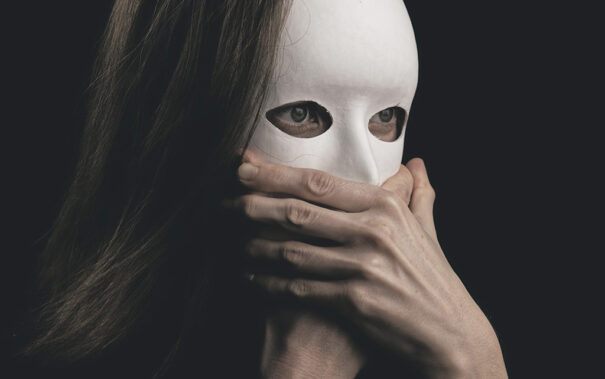El límite del humor: la parodia en el sector audiovisual
Patricia Mariscal, abogada en Bardají&Honrado, reflexiona sobre los límites del humor y su realidad jurídica a través de esta Tribuna.
La conjunción entre humor y crítica es un magnífico acicate para la creatividad. Cuando esa creatividad da lugar a una creación cómica que tiene como blanco de su crítica una o varias obras anteriores, hablamos de parodia.
El audiovisual ha sido siempre un sector muy prolífico en lo que a creaciones paródicas se refiere. Cuántas películas son auténticas parodias de otras anteriores o incluso de todo un género cinematográfico. Las Spoof movies se nutren del éxito de obras previas a la vez que se aprovechan del hartazgo que, en ocasiones, genera la proliferación masiva de obras audiovisuales en torno a una misma temática. Aterriza como puedas (1980) o Top Secret (1984) son un buen ejemplo de ello. Es precisamente el auge de las películas sobre catástrofes aéreas y sobre espías de la segunda guerra mundial en los años previos lo que propició el éxito de estos dos referentes de la parodia cinematográfica. Desde entonces, ningún género ha conseguido escapar a la parodia. Por señalar sólo algunas de las más conocidas: en el año 2000 Scary movie vino a mofarse abiertamente de las películas de terror y especialmente de Scream (1996), y unos años más tarde le tocó el turno a la comedia romántica con Date movie (2006). También algunas de las más populares sagas cinematográficas, como La Guerra de las Galaxias o Crepúsculo, han sido objeto de burla, aunque el resultado no haya sido siempre el mejor de los posibles. Y es que los éxitos de taquilla son carne de cañón para la parodia.
Pero ¿qué dice la Ley sobre la parodia? ¿puedo apropiarme de cualquier obra previa siempre y cuando la modifique mínimamente y le añada un toque de humor? ¿Qué otros requisitos han de cumplirse para que una parodia sea lícita?
Empecemos por lo básico: el significado de parodia.
La Ley española no contiene una definición de parodia, por lo que ha de tomarse el sentido que este término tiene en el lenguaje corriente. El diccionario de la RAE la define como “imitación burlesca”, definición que, aunque breve, contiene los tres elementos fundamentales de esta figura: la imitación (en realidad, transformación) de algo previo, y la burla, término que engloba a su vez la crítica y el carácter humorístico.
Evidentemente, la Ley de Propiedad Intelectual se refiere a la parodia de obras, por lo que las imitaciones humorísticas de otros elementos ajenos a la propiedad intelectual (por ejemplo, de las declaraciones de un personaje público) quedarían al margen de este problema, sin perjuicio de las implicaciones que pudiera tener una parodia de este tipo desde el punto de vista de los derechos de imagen o del derecho al honor. Lo mismo ocurre cuando lo que se parodian son determinados acontecimientos históricos, como, por ejemplo, ocurre en La vida de Brian (1979).
Por otro lado, cuando la Ley habla de parodia de obras anteriores se refiere a obras concretas, por lo que tampoco supone ningún problema desde el punto de vista de la propiedad intelectual la parodia de todo un género sin tomar o hacer referencia a elementos específicos y recognoscibles (diálogos, personajes…) de obras previas.
¿Por qué se permite la parodia?
La parodia es una excepción al Derecho de autor, lo que significa que la regla general es que para transformar (es decir, para modificar una obra con resultado creativo) hay que pedir consentimiento al autor. La justificación a este límite está en el fomento de la crítica y su libre expresión. Precisamente porque el autor de la obra parodiada nunca se prestaría a autorizar la sátira de su obra, se permite por vía legal lo que de facto ya sucede. Por eso es un elemento fundamental de este límite al Derecho de autor la existencia de un mensaje crítico que se proyecta sobre una o varias obras anteriores.
Sin embargo, en ocasiones se hace uso de obras preexistentes para parodiar o caricaturizar a personas, hechos o situaciones que nada tienen que ver con la obra parodiada. Es lo que los anglosajones llaman “weapon parody”, en contraposición a “target parody”, que es el supuesto típico previsto en nuestra Ley. Un caso de weapon parody podría ser el de los deepfakes que tan virales se han hecho en nuestro país y que consisten en sustituir los rostros de actores de obras emblemáticas (El Equipo A y Austin Powers, entre otras) por las de personajes públicos (normalmente políticos). En estos casos, la burla no está dirigida a las obras audiovisuale,s sino a los personajes reales que caricaturizan.
Es discutible que en estos casos la transformación de la obra previa esté amparada por el límite de parodia, pero en los últimos años los tribunales parecen haber aceptado la licitud de este supuesto. En esta tendencia ha jugado un papel relevante la sentencia del Tribunal de Justicia de la Unión Europea de 3 de septiembre de 2014 (asunto c-201/13; Deckym) en la que se consideró amparado por el límite parodia la transformación de la portada de un conocido cómic belga De Wilde Weldoener (“El benefactor compulsivo”) con fines políticos. En aquel caso, el demandado había tomado la portada original en la que aparecía un personaje arrojando monedas a una muchedumbre desde las alturas, sustituyendo su cara por la del alcalde de Gante e introduciendo personajes de raza negra y con burka. El Tribunal de Justicia no consideró un obstáculo para aplicar la excepción de parodia que el objeto de la crítica burlesca fuese una realidad totalmente ajena a la obra parodiada, pues era evidente que el demandado no tenía intención alguna de parodiar la historieta gráfica original, sino ridiculizar la política de inmigración del alcalde de Gante.
Otros requisitos que ha de cumplir la parodia para ser lícita
Aunque la crítica no vaya dirigida a la obra parodiada sino a una realidad ajena, lo que está claro es que la transformación burlesca o jocosa ha de proyectarse sobre la obra protegida que se “toma prestada”. Dicho de otro modo, el límite de parodia no ampara la utilización de obras que, sin ser transformadas, son incluidas dentro de otras que sí tienen carácter cómico o paródico, como tampoco ampara la utilización de obras dentro de un contexto de humor sin que se opere sobre las mismas una transformación paródica.
Esto es lo que ocurrió, por ejemplo, con la película ¡Buen viaje, excelencia! (2003), una parodia de los últimos días del General Franco. En dos escenas de la película se introdujeron unos segundos de la obra musical Cara al sol sin que, al parecer, se hubiera pedido permiso a los titulares. Éstos demandaron y el asunto llegó a la Audiencia Provincial de Barcelona (Sentencia de 23 de noviembre de 2018). La defensa se centró en argumentar el carácter paródico de la obra audiovisual, lo que eximía de solicitar cualquier autorización a los autores de la música. El tribunal no aceptó esta argumentación y consideró que el uso de la música no quedaba amparado por el límite de parodia pues, aunque era cierto que se trataba de una obra cinematográfica paródica, el carácter paródico no irradiaba necesariamente a la obra musical, que era reproducida tal cual.
Por otro lado, el hecho de que se exija la transformación de la obra original no significa que todos los elementos que la componen hayan de ser modificados. Por ejemplo, en el doblaje paródico lo único que se modifica son los diálogos, manteniéndose inalterados el resto de elementos de la obra audiovisual. Algo similar sucede cuando se cambia la letra de una canción manteniendo la música, supuesto que, por cierto, fue aceptado como parodia legítima por nuestros Tribunales en el pasado. El caso típico es el de una escena de una película, de una serie o incluso de un anuncio en el que los diálogos originales son sustituidos por otros que, al ser completamente ajenos a la escena que se representa y a los personajes, producen un efecto cómico por absurdo.
En estrecha relación con el requisito anterior, la parodia ha de diferenciarse claramente de la obra parodiada de manera que el público no confunda una con otra. Si la parodia está bien hecha la confusión no va a producirse nunca, pues de lo que se trata es de generar un contraste humorístico con la obra parodiada.
Por último, el artículo 39 de la Ley de Propiedad Intelectual exige, para la aplicación del límite, que no se infiera un daño a la obra original ni a su autor. Resulta un tanto irónico este requisito de nuestra Ley cuando la esencia de la parodia es precisamente su ánimo burlesco. Por ello, tal exigencia ha de interpretarse en el sentido de que la parodia no debe perjudicar la normal explotación de la obra parodiada. De nuevo, una buena parodia difícilmente va a quitarle cuota de mercado a la obra parodiada. Y probablemente tampoco si la parodia es mala.
¿Y qué hay del pastiche?
La última reforma de la Ley de propiedad intelectual ha introducido en nuestro ordenamiento la figura del pastiche. Se define como “la transformación de una obra divulgada que consista en tomar determinados elementos característicos de la obra de un artista y combinarlos, de forma que den la impresión de ser una creación independiente”.
Nada dice el precepto de la intención y/o resultado humorístico o burlesco de esta figura, si bien parece que la intención del legislador ha sido proporcionar al límite tradicional de parodia una nueva dimensión digital. En concreto, tal y como se desprende de la Exposición de Motivos del Real Decreto-Ley 24/2021, se trata de dar cobertura legal a los conocidísimos «memes», para que su difusión y viralización se vean mínimamente afectadas por cuestiones jurídicas.
¿Quién no recuerda el clásico meme con un célebre rostro señalándonos, acompañado con la frase “y lo sabes”? ¿O el de una niña que nos mira con cara desafiante mientras al fondo se ve un incendio probablemente provocado? Es de sentido común pensar que las imágenes de las personas que protagonizan los memes, o las imágenes que se incorporan, posiblemente estén sujetas a derechos que impedirían su uso no autorizado. Pero es justo aquí donde entra en juego el límite del pastiche, amparando usos que en ocasiones se han extendido hasta el punto de que difícilmente sería posible detenerlos invocando cuestiones jurídicas.
En realidad, si nos atenemos al tenor literal de la norma, el límite permite usos más allá de la crítica humorística, como pueda ser la incorporación o manipulación de obras previas a modo de tributo u homenaje. Es cuestionable, por otro lado, hasta qué punto el pastiche opera en otros ámbitos distintos de las artes plásticas, pudiendo, por ejemplo, dar cabida a la libre utilización de obras ajenas dentro de una obra audiovisual independientemente de la naturaleza de la obra incorporada (plástica, musical o audiovisual).
En esta situación de incertidumbre jurídica, quizá lo prudente es no alejarse mucho del campo acotado de la parodia, donde el humor es un componente esencial.
Patricia Mariscal
Abogada en Bardají&Honrado
¿Te gustó este artículo?
Suscríbete a nuestro NEWSLETTER y no te perderás nada.




